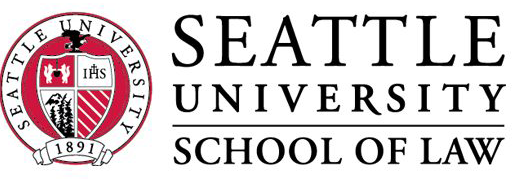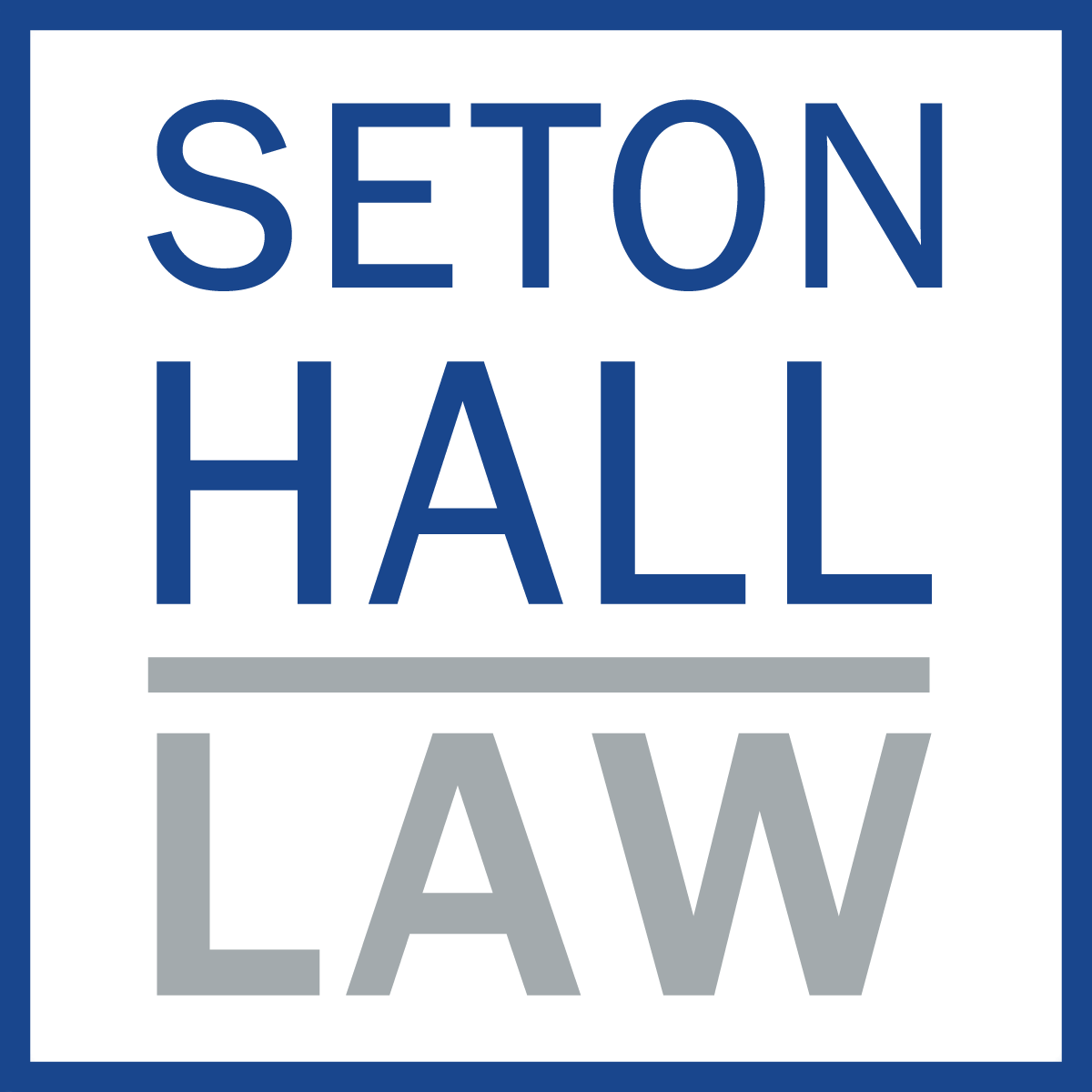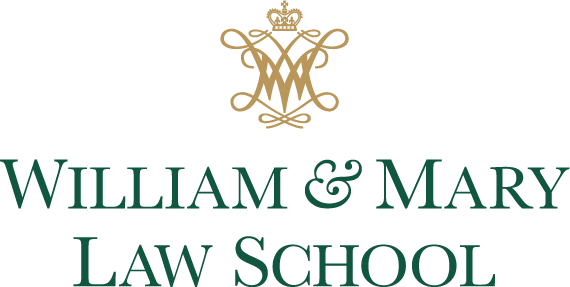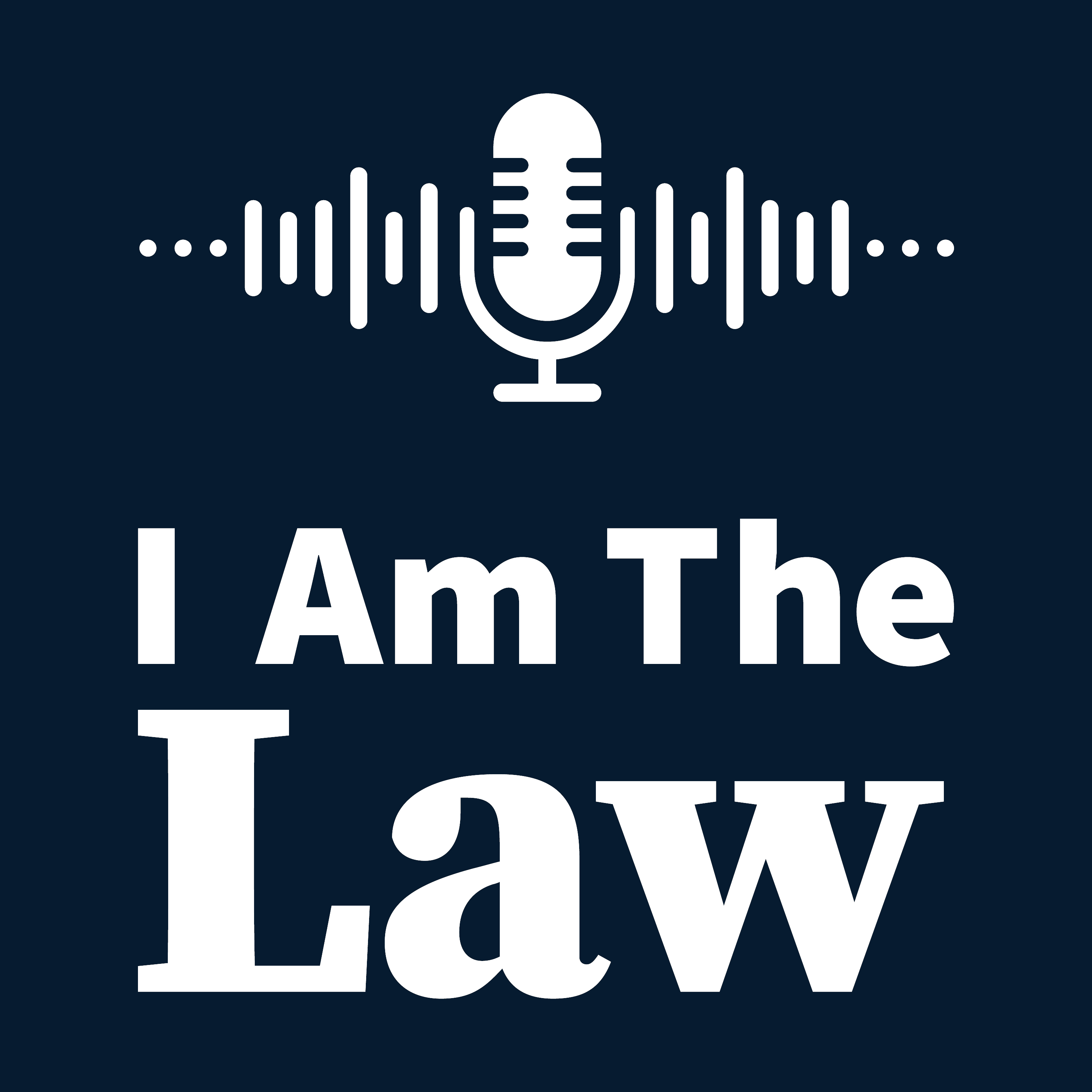From Lab to Law: Protecting and Commercializing Research
Jenifer Slinskey manages the University of Pittsburgh's patent portfolio, a role that bridges the gap between academic research and industry commercialization. While this job does not require a law license, her STEM and patent law background improve the experience for the researchers she interfaces with and the outside patent counsel she manages. From submitting an invention disclosure form to collaborating with outside counsel, Jenifer outlines the rigorous process that transforms an inventor's academic idea into a commercial product. She provides an inside look at the collaborative effort required to protect and promote intellectual property at a leading research institution. Jenifer is a graduate of the University of Dayton School of Law.
Transcript
Katya Valasek:
We're joined today by Jenifer Slinskey, Associate Director of Intellectual Property in the Innovation Institute in the Office of Innovation and Entrepreneurship at the University of Pittsburgh. While it kind of sounds like you're buried deep in a massive organization, you're actually at the center of something very important to a leading research university like Pitt. So when you sit down at a dinner party, how do you describe the core function of your job?
Jenifer Slinksey:
So normally I start with telling people that I'm a patent attorney and that I work for a university. And I basically explain to them that I'm the bridge between academia and protecting the inventions that the faculty and researchers come up with. And overseeing the patent portfolio for the university. And I work with others in our office to get that technology out to partner with companies and industry to scale and commercialize.
Katya Valasek:
You mentioned that you manage a patent portfolio. What is a patent?
Jenifer Slinksey:
It's given to you by the government to protect an invention. In exchange for disclosing your invention to the patent office, you're granted exclusivity -- the right to exclude others from making, using, and selling your invention.
Katya Valasek:
You mentioned that Pitt owns quite a few patents. How does Pitt end up with so many?
Jenifer Slinksey:
Pitt ranked in 2022 third in the country overall in the amount of dollars given by NIH for research. And so they have just a huge amount of research going on at the university. And when that research is funded federally, then the university has the obligation really to move that forward if it's an invention and to obtain patent protection and to commercialize it with a partner.
Katya Valasek:
I know that you passed the patent bar. Can you explain what that is?
Jenifer Slinksey:
To prepare and prosecute patent applications for clients, you need to have taken the patent bar. And you can take that as an attorney and then you're called a patent attorney. Or you can sit for that bar without going to law school and you're called a patent agent. And so the patent bar is a separate bar exam from the U.S. Patent Office. And in order to sit for the patent bar, you need to have an undergraduate degree in a certain area, so one of the sciences, engineering, or a certain number of classes to qualify.
Katya Valasek:
I can see how that experience can really help you as you're sitting down with the inventors and they share their ideas. What is something that you feel like inventors frequently miss when they begin the patent process?
Jenifer Slinksey:
I think something that oftentimes they need to learn is the difference between an inventor for a patent and an author for a research publication or an article. You can be an author on the article that describes the invention, and you may not qualify as a patent inventor of the patent itself. That's sometimes something that they're not familiar with if they've not yet been through the process. So to be a patent inventor on a patent, you need to have contributed to at least one of the claims of the invention and, not to get too far in the weeds, but a patent is a teaching document. In the beginning of it, you describe your invention and you give examples, and you're taking someone through how to make and use the invention. And at the very end, there's something called the claims of the patent. That's really kind of like the fence of where your protection is and you explain exactly what your invention is.
Sometimes when research is going on, people are working in the lab and they're doing a lot of wonderful research and moving the invention forward, but they're doing it at the direction of someone else who's telling them what to do. They may qualify as an author to be listed on the paper, but not as a patent inventor for the patent.
Katya Valasek:
So is this one of the things when you first meet with people in your office, is this one of the expectations that you try and set or information that you share to try and cut down on disappointment as you move through the process?
Jenifer Slinksey:
Yeah, when the inventors submit, they submit a document to us called an invention disclosure, and they identify the …. we purposely call them innovators, not inventors. We ask them who the innovators are. And then when we work with the people in our office, as well as the attorneys that are assigned to the case, they walk through what the definition of a patent inventor is with them. And we kind of let them know that, people may or may not beyond the actual patent who's listed as an innovator or someone may be added as you work through it. So there's a back and forth with the investigators, the patent innovators from the university and the patent attorney.
Katya Valasek:
So not only do you have a patent background, but you graduated with a chemistry degree, so you spent a lot of time in the lab yourself. Do you feel like that combination of experience in your background gives you a leg up in having these conversations and working through the process?
Jenifer Slinksey:
Understanding what happens in the lab and what's done at a certain level as far as research goes at the university can help me identify with them and explain things to them because I can see how they're thinking from the research perspective rather than from the patent perspective.
Katya Valasek:
Let's talk a bit about invention on campus. Someone thinks they've discovered something cool and they come to your team. What happens?
Jenifer Slinksey:
When someone thinks they have invented something, we have a way for them to contact us and to give us all the critical information that we need. And it's really in an online submission called an Invention Disclosure Form. And we walk through a number of questions that we ask them to help us evaluate what the invention is. They can do attachments and submit additional data and things for us to look at. And when that submission comes in, it comes into our office and it gets assigned to someone within the office who has a background in that particular area. And so we have a lot of individuals in our office who have advanced degrees in certain areas and they get assigned those invention disclosures to review and figure out and make a recommendation to a committee to figure out how we want to move forward.
Katya Valasek:
What happens if the committee does decide to file a patent?
Jenifer Slinksey:
If we decide to file a patent, then we match that group of inventors and the invention with a outside counsel law firm that we use. So we use a number of law firms across the US, different attorneys with different backgrounds, and we basically assign the application to that outside counsel to work with people in our office and with the researchers to draft a patent application.
Katya Valasek:
And then what's your role throughout this process?
Jenifer Slinksey:
My role is to manage and oversee the patent portfolio for the whole university. So I am a liaison between outside counsel and members of the university, our internal team, as well as the researchers to make sure that everything is going along smoothly and to help them make decisions on what we want to do. What countries do we want to file in? As we're going through the patent process, how to respond to something that is issued from the patent office, because there's really a back and forth when you file your patent application between yourself and the patent office, trying to figure out what's patentable and what you've submitted.
Katya Valasek:
So let's take that example of deciding what country to file in. How do you work through that process? Are you guiding the inventors or are you making that decision on your own?
Jenifer Slinksey:
Right, so we make the decision, we take input from the inventors, but we work with budget constraints at the university. And so we have a group of people called licensing managers who are actively assigned to each technology, and they're trying to figure out who we can partner this with in industry, right? So, who can we license or option this technology to? If the technology is optioned or licensed, then that company is brought into the discussions and they guide where they see protection necessary across the world. So patents are geographically limited. The United States patent gives you protection in the United States. You're not gonna have protection in Canada. So, you file wherever you want protection. If we have a partner in industry, we're taking their opinion into account and making sure that we're getting protection and where they need it. If we don't have a partner, then we do ask our investigators who do you think would be a good partner for this? And then we do research internally on what markets we think it would be wise to file in. And oftentimes, we might just file in the U.S., which sounds like, just the U.S. But the U.S. is a huge market in the world. So having just a patent in the U.S. really can give you a lot of benefit.
Katya Valasek:
And who benefits from the patent? Does Pitt benefit or do the inventors benefit?
Jenifer Slinksey:
So when a patent is licensed to a company and say they make a product, we have an agreement. And so Pitt shares in the profits. And we also have a patent policy where our inventors get a portion of the profits in the proceeds as well. And so if you're a named patent inventor, then you do share in it, as well as the university as a whole.
Katya Valasek:
But the patent is in the inventor's name or the university's name?
Jenifer Slinksey:
The inventors are always individuals. So they're the patent inventors. But the owner of the patent would be the university. So the owners, the university, the university as an entity is the one that contracts with companies to license the technology. So the patent inventors, they don't spend any money to obtain the patent and they disclose it to us as part of their employment with the university and then if we're able to commercialize it, they share in the proceeds.
Katya Valasek:
Interesting. So for a lot of STEM majors, the most common or obvious paths for careers are into healthcare or research. Why did you end up taking the path to law school?
Jenifer Slinksey:
I was a chemistry major, and I assumed going into that that I would work in industry, work in a lab somewhere. I went to a small university in Pennsylvania called Allegheny College, and there's a research requirement. So you need to do your own independent research to graduate. Sending all that time in the lab, I realized I wasn't necessarily happy in the lab. A professor had suggested to me, what about patent law?
And I honestly had never heard of it. And he explained it to me. And he said, this is an area where when you go to law school, you'll see there aren't a lot of science majors. And so you'll always have a job. It will weed out other people that go to law school because they can't sit for the patent bar. You're still involved in science. You're still seeing things being developed. You're still actively trying to get things out and to benefit the public, but you're doing it from the attorney perspective. That really appealed to me.
Katya Valasek:
So when you started to practice or even before that, when you started to look into law school and pursuing the patent bar, what did you find in those opportunities that was missing for you when you were in the lab?
Jenifer Slinksey:
I think I, being in the lab is…is not for everyone and for me, just doing the research day to day. There's a lot of time that you're put in, and it's just baby steps going forward. Tthere's just a lot of hours that are put in to try to move something forward. And so that just wasn't for me. So when you're practicing as a patent attorney, my background was chemistry. You're seeing chemical inventions. So from that perspective, you're really seeing a small segment of inventions, but you're seeing a lot of different inventions and helping to move them forward to get protection. And then when you think of this job that I'm in now, I get to see all of the inventions across the whole university, not just chemistry. I get to see it from the very beginning and hopefully it gets licensed out to a company and we have a product and it's helping people. I think of it kind of like pulling out a microscope, right? Like initially I was very far in, focused in on the research and then take a step back to being a patent attorney and you're seeing more. And then now where I am now, it's just such a nice landscape of getting to see a wide variety.
Katya Valasek:
I love that. When you were practicing, you were in most corners of intellectual property. You did patent preparation, patent prosecution, copyright, trademark, and even deal work. How did you get the idea to transition to this role that you have now at the university?
Jenifer Slinksey:
Yeah, so I wasn't actively looking to switch jobs. The university was one of my clients, so I did patent prep and prosecution work for the university in the chemical area. The woman who had this job prior to me contacted me to go to lunch. We didn't often do that, so I thought something might be up. She basically told me that she was having her third baby and she was not going to come back, so they were going to be filling her role. She really wanted me to know about it. She thought I would be a good fit. And so she wanted to let me know of that opportunity in case I was interested. And I was and I applied for it and I got the job. It was just really just that connection with her doing work for the university and making that connection with her that got me thinking about moving.
Katya Valasek:
You know, people talk a lot about networking and making connections when you're talking to current law students. But I think this is just such a great example of why keeping up those connections and building your network when you're in practice is so important. How lucky to have an opportunity that someone thought was a good fit for you, cross your path, without you having to be ready to look for another job.
Jenifer Slinksey:
No, it really is. And this happened to me earlier in my career as well. This was before I even had a job. I had interviewed. I knew I wanted to stay in Pittsburgh. I had interviewed with a company. It was a collections position. It was not a patent attorney position. I didn't get that job, because I remember when I interviewed with a group of people, they had said, you know, what? You're a patent attorney, why are you interviewing for this? And I really wanted to stay in the Pittsburgh area. And that's kind of why I interviewed for that job. Then I got a job at a small boutique law firm doing patent work. I got a call from someone else saying, “I'm looking to hire, my client is this company that I had interviewed for the collection work, they remembered you, and I'm their patent attorney. And they said that I should reach out to you and see if you would be interested in joining my firm.” You don't know where your opportunities are gonna come from, but I think it's amazing how life oftentimes just works out.
Katya Valasek:
Yeah, and it's interesting because it was a professor that put this career trajectory on your radar while you were in the lab. And you're now similarly situated. You're not a professor, but you're interacting with these inventors while they're on campus. Do you make an effort to have that mentorship role with some of them? Or is it you're just the person who manages the portfolio of patents?
Jenifer Slinksey:
Yeah, I love to speak with people about patent law and the opportunities. And not just me, but others in the office. We do outreach within the university to kind of spread the word of the office and what we do. I get calls all the time to talk to people who are thinking about patent law or who just have a curiosity about it. I do love to answer questions about it and to help people kind of figure out what this area is and if it's something that would be interesting to them.
Katya Valasek:
That one decision has put you in such a different place in terms of visibility and guidance. And it's actually common to have something similar to the Innovation Institute on a campus. They're usually called tech transfer offices or something similar. Why is it such an important part of a research university like Pitt?
Jenifer Slinksey:
That's right. And the lingo has changed over the years. It used to be Tech Transfer Office, and now we've kind of modernized it to Innovation Institute. But back in the 80s, there was something passed called the Bayh-Dole Act -- legislation that deals with federal research money. When inventors at universities are given research money from the federal government, the money comes to the investigators. And when you take federal research money, you have an obligation under the Bayh-Dole Act to commercialize the technology. And so before the Bayh-Dole Act, there was federal money given to investigators, but the obligation really to commercialize it was on the government and that process didn't work very well. Now universities have the obligation and the right to claim ownership of the work and to then try to partner and commercialize it with industry to get it out there to help the world. All these universities started tech transfer offices. Some had before, already had, but a lot more started after the passage of the Bayh-Dole Act.
Katya Valasek:
Your office sounds like a bridge between the source of the federal revenue and the research and the industry and pushing to license and commercialize these inventions. You mentioned that your office has a number of experts in certain areas who review the submissions as they come in. And you also mentioned that you use outside counsel for the patent. Are there other attorneys in the office with you?
Jenifer Slinksey:
There actually are other attorneys in the office, not necessarily practicing as attorneys for the university. So the university has a whole other office, the Office of University Counsel. And there are staff with attorneys that are doing attorney work for the university. Within our office, there are a number of attorneys who are working as well, not necessarily as attorneys on behalf of the university. Another individual that we have that is an attorney oversees government compliance. Wen you take federal money, there are certain things that you need to do as far as being in compliance with the awards and so we have a whole department on that. We have at least one, maybe two patent agents. People who sat for the patent bar but are not patent attorneys, so have PhDs in a particular area and then sat for the patent bar.
Katya Valasek:
So leaving private practice can sometimes mean sacrificing salary. But moving to a nonprofit provides some benefits too.
Jenifer Slinksey:
Yeah, so one of the biggest changes initially when I first moved over was that we don't bill our time. I had been at a larger law firm for a number of years before I came and that was just, you're just ingrained, you think in six-minute intervals. And so to not track your time was really new to me. And another thing was that there's a scheduled workday. So at our law firm, there was no scheduled start time, no scheduled end time, no scheduled work day, really. I could go all week, including the weekend. But at the university, there's a Monday to Friday. Our office has set hours. And I remember being surprised, because I knew that taking the job, but being surprised that people left at that time. And so that was kind of surprising. So you really do get more of a work-life balance if you were not someone who kind of imposed that on yourself beforehand.
As far as the work goes, I feel like it is because you get to see and I get to see the inventions from when they're first disclosed to us all the way to when they get hopefully commercialized. I think it just gives you, it gives me anyway, more of a sense of just contributing to the greater good. It's fulfilling to see inventions get licensed in products, get out there, and hopefully help people.

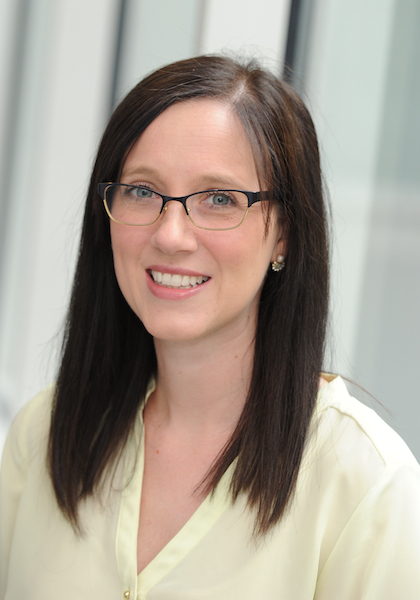 Katya Valasek
Katya Valasek


